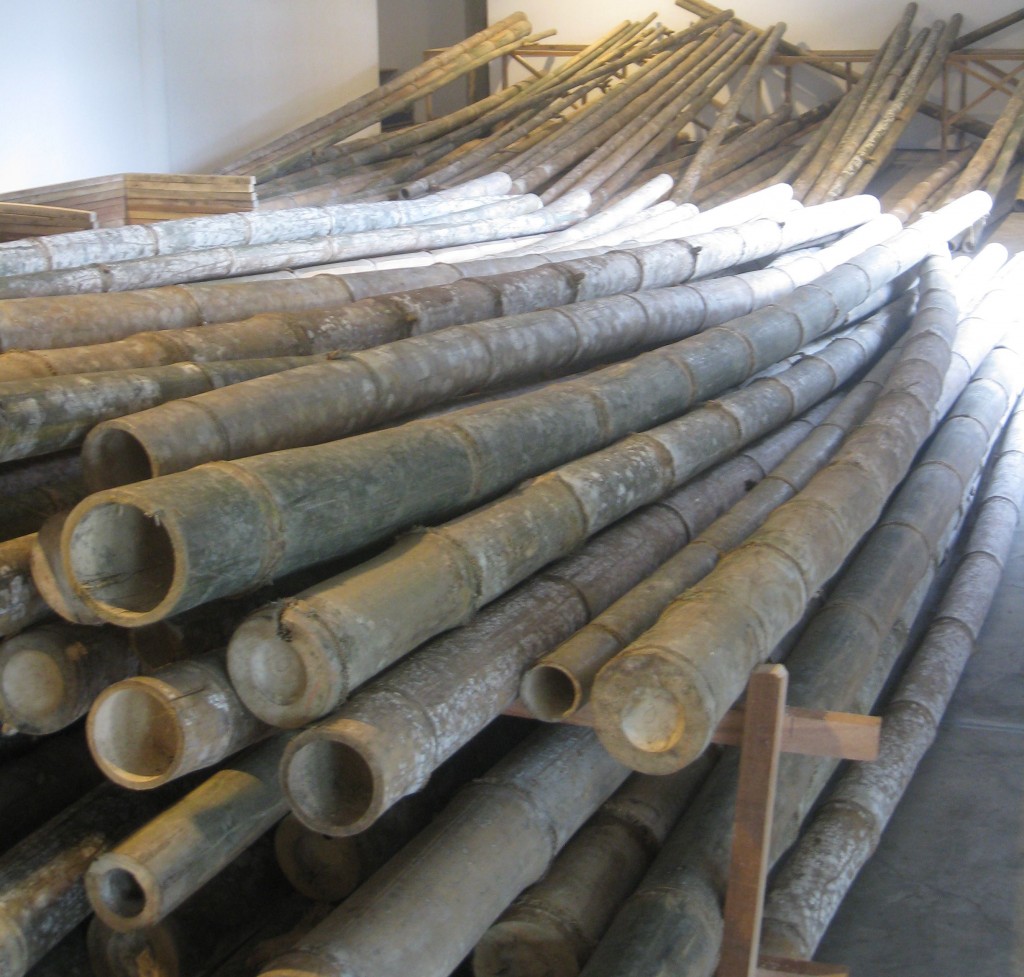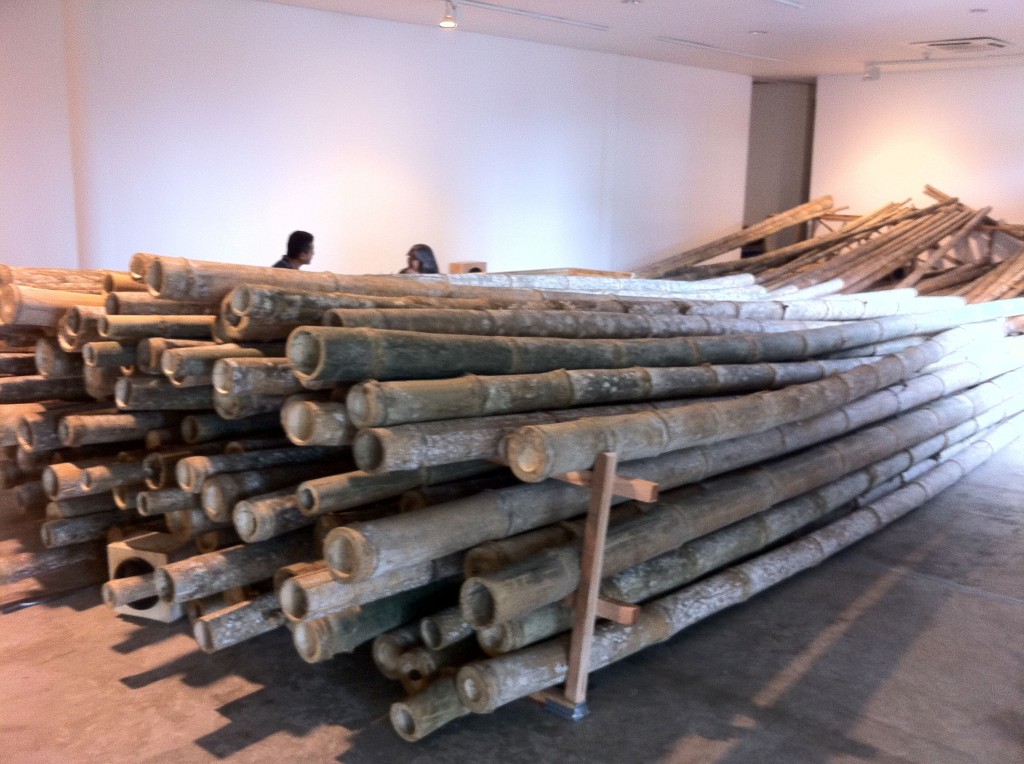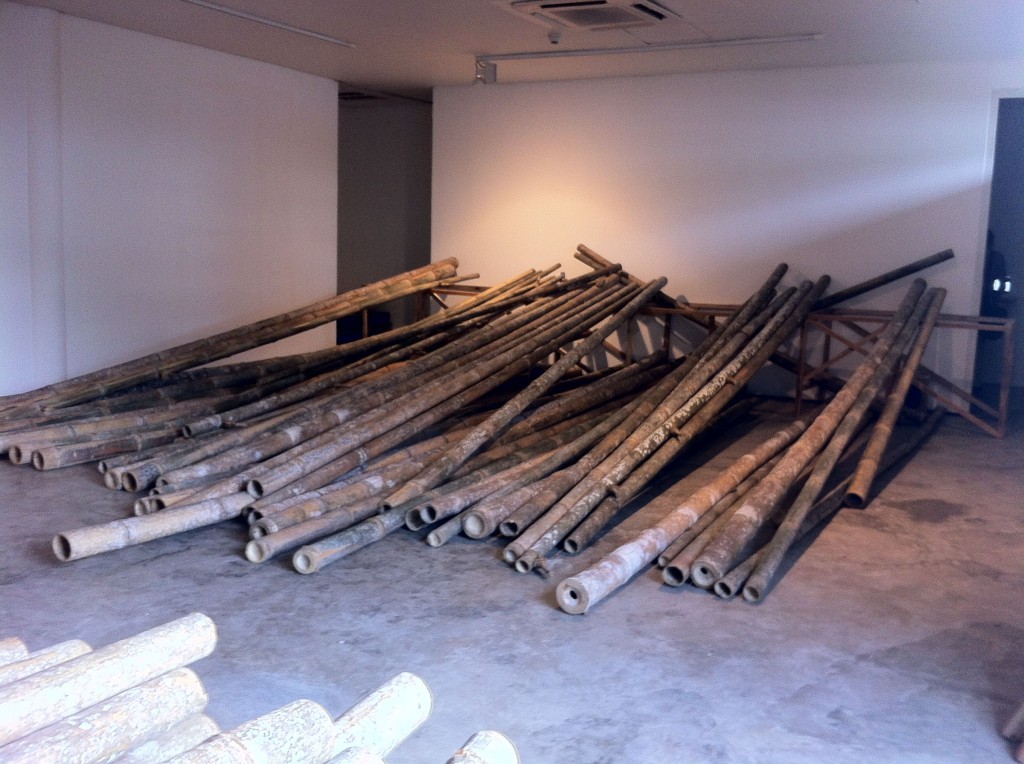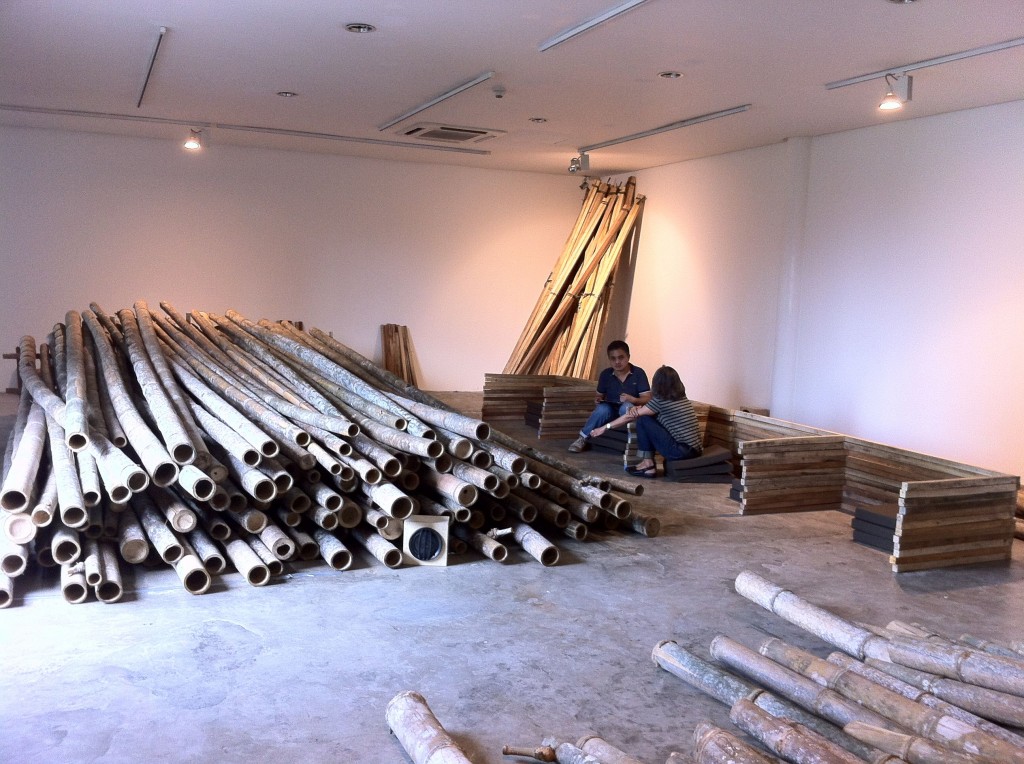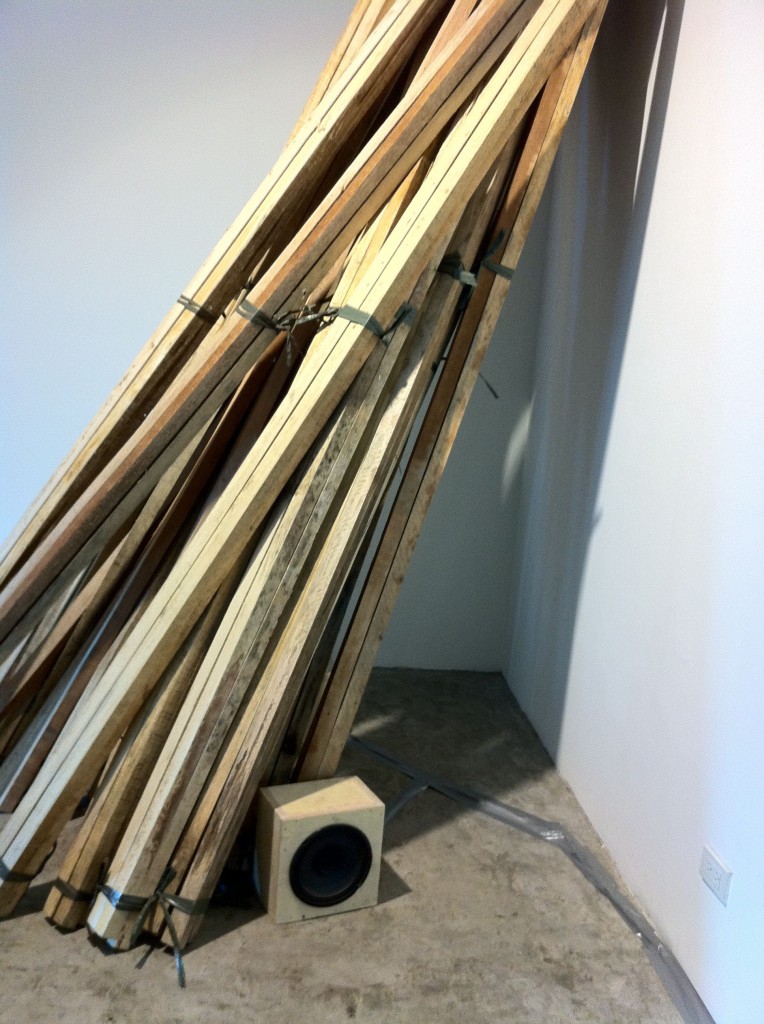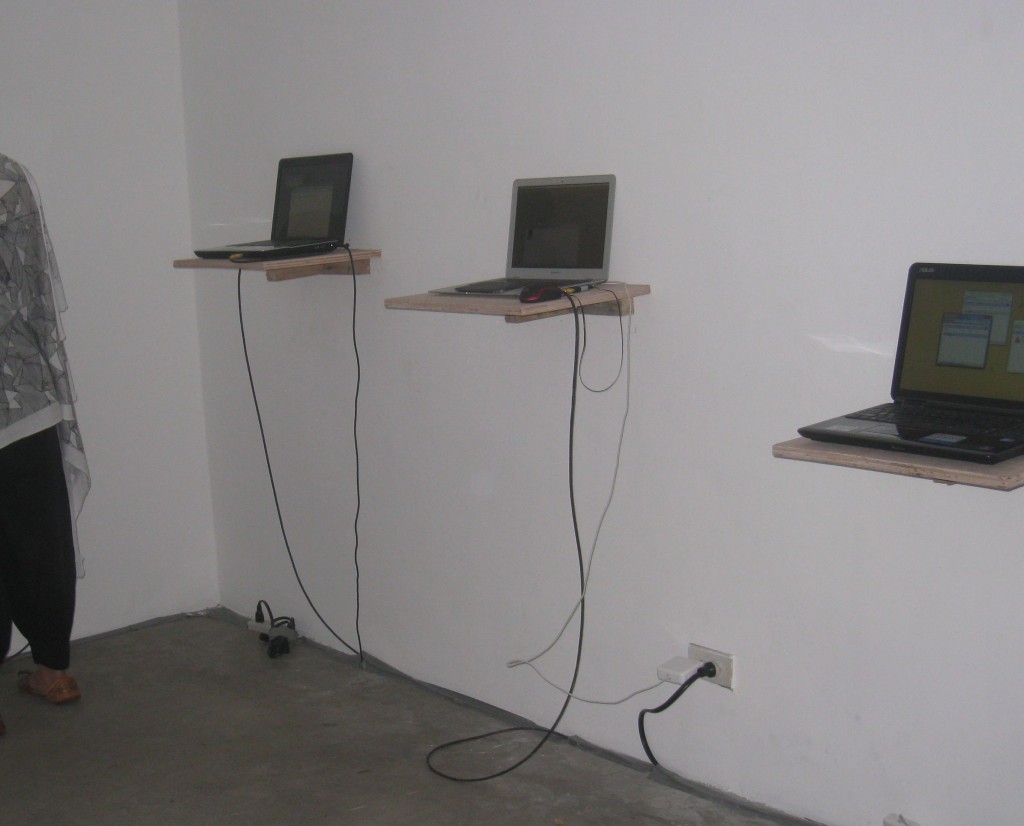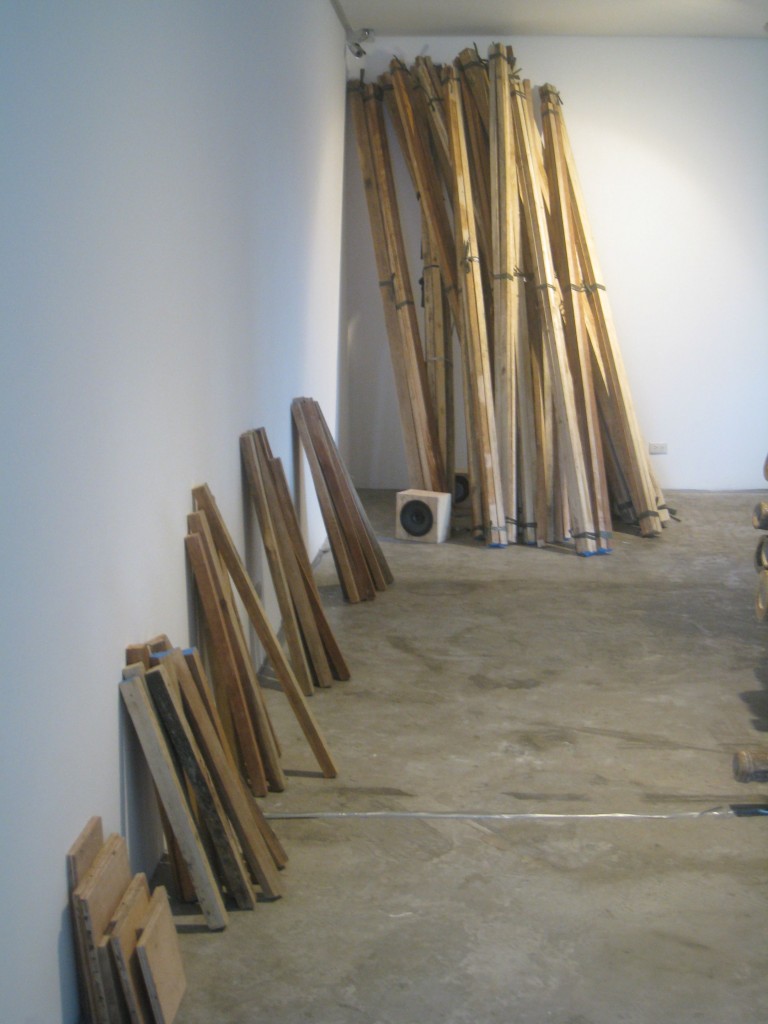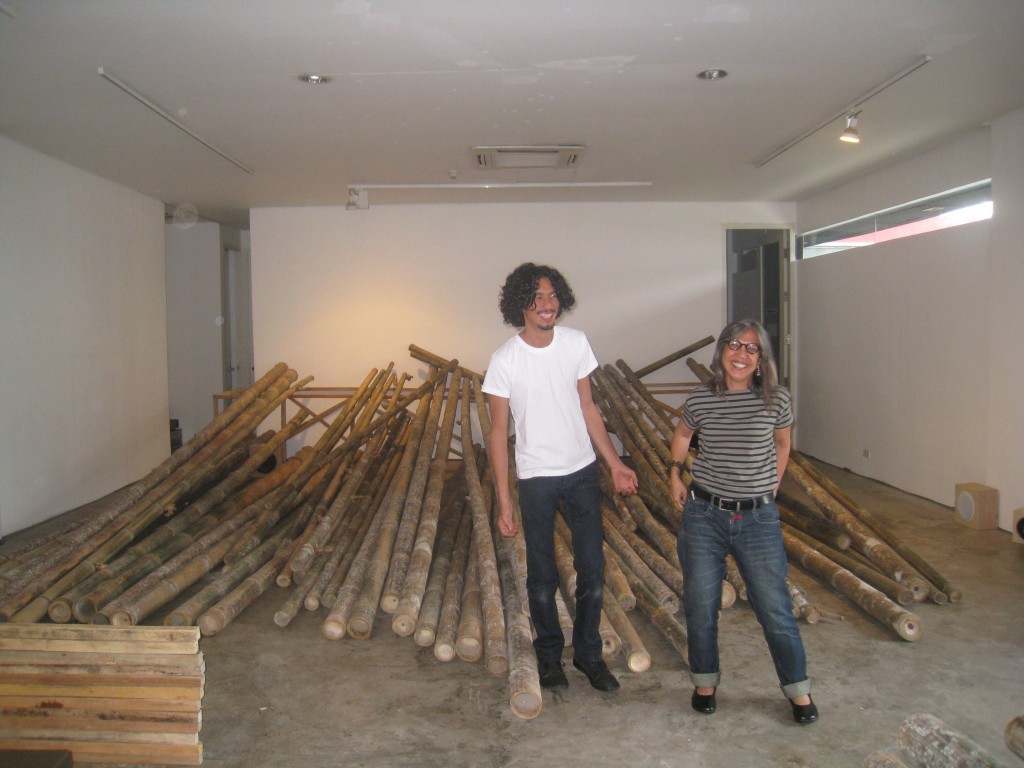Last year, while visiting Manila, Lani Maestro saw Poklong Anading’s U-turn at the residence of interior decorator and artist Yola Johnson. Made for the inaugural exhibit of Finale Gallery’s new space in 2008, Poklong’s piece of two empty cans of paint held together by an arc of neon so impressed Lani that she decided to seek out the younger artist. “When I saw this one work, that’s it!” she jokingly declared. “I didn’t want to see any more!”
Born and raised in the Philippines, Lani, 55, left Manila for Canada in the early 1980s to pursue graduate studies in art. She currently resides in France, one of Philippine art’s most well respected migrants. Lani works with a variety of media and has exhibited extensively, representing Canada in several prestigious art events. This does not mean, however, that she has not kept up with Manila’s art scene. “I think there’s been a shift in the last ten years in terms of energy, in terms of thinking— looking at it from the outside. That’s one of the reasons why I wanted to work with Poklong. Sige nga, pa-hawa!”
Poklong, 36, has built up his own impressive resume. A two-time Ateneo Art Awards winner, he also moves comfortably across a range of media, from installation, to sound, to video.
Digital Tagalog, a collaborative piece by the two artists, now runs at MO Space. It is a show on found and prepared sound, and what viewers make of them in an assembled environment.
Stacks of bamboo, the thick and hefty variety used for propping up structures or serving as scaffolding, fill the gallery. Assorted lengths of wood lean against the walls. The whole installation resembles preparations for a construction site.
The heart of the exhibit, however, lies in the gallery’s small Project Room where Poklong and Lani have arranged several computers on shelves. Each one carries sound recordings inspired by indigenous Filipino music from the library and archives of Dr. Jose M. Maceda, National Artist and founder of the UP Center for Ethnomusicology. Viewers can choose from among the recordings, and the sounds come out on speakers scattered around the installation. The melody from a harmonica is meant to mingle with a hammer’s ceaseless pounding, or the crowing of a rooster. Should one wish to add to the cacophony, one may take sticks to beat against the bamboo. The whole experience is meant to be interactive and spontaneous.
“After listening to Maceda’s research… the different sounds of all these Philippine tribes, it seemed natural to use bamboo,” Lani shares. “It corresponds to rhythm. A lot of our instruments were made with bamboo.
“You can take the use of bamboo to many different directions. For me it’s that hollowing sound, very metaphoric of many things. Bamboo is functional but once you use it for sound, it’s not just functional anymore. That’s very close to art making: you make useless things… So the idea of poetry, the idea of song, or singing, or life, where does that come from? The feeling of being connected to the universe… and so for us too, it’s a question of why are we making art?”
Both artists agree that the process of preparing for the show enriched them as much as the resulting piece. It involved endless conversations on Skype, or get-togethers over drinks, and having friends contribute to their sound clips. Poklong describes the conversations as a creative ritual where nothing was planned or predetermined. They even chose the exhibit’s title, Digital Tagalog, simply because it sounded right.
Lani elaborates: “Conceptually, when we worked, when we talked, it was very deep, very rigorous, very pleasurable. It’s rare to find an artist who I can discuss things in a particular way. It’s been an endless conversation about making, about being, about living, about sources of inspiration.
The work just happened. What we’re making—the musical part—there’s no beginning and no end. I hope our collaboration turned out like that, no beginning and no end, so it’s never fixed.
This piece, it’s a living thing. You don’t hang it on the wall now that we’re done. For us, we’ve made something that creates a kind of exchange, where you have a relationship with people, with the materials, an expansive echoing relationship.”
Digital Tagalog runs from 30 June to 29 July 2012 at MO Space, 3F MO Design Bldg, Bonifacio High Street, Bonifacio Global City, Taguig. Phone (632) 856-2748 or visit www.mo-space.net

